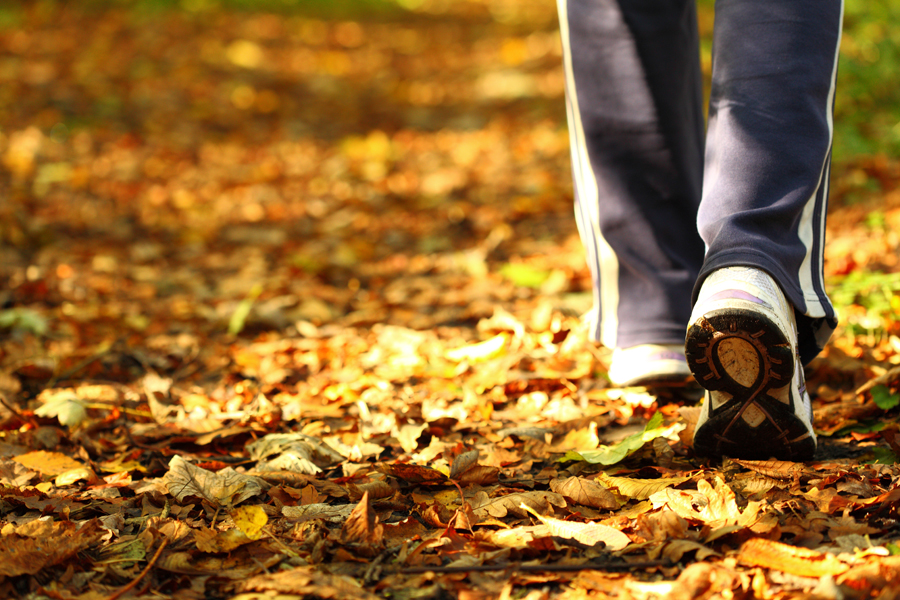Fibromyalgia is a chronic medical condition characterized by widespread pain that can sometimes include symptoms such as fatigue, memory problems, sleep disturbances and mood changes. It is believed that fibromyalgia affects the way your brain receives pain signals and causes pain sensations to be increased above normal levels. There is currently no cure for fibromyalgia and doctors are only able to try to treat the symptoms caused by fibromyalgia. Medications and lifestyle changes can help to improve the quality of life of those people affected by this condition. Walking is considered by many experts to be one of the best ways to manage many of the symptoms of fibromyalgia. Let’s start by taking a look at the symptoms of fibromyalgia and then discuss how walking can help.
Symptoms
Symptoms of fibromyalgia can include:
- Chronic widespread pain
- Tender points throughout the body
- Chronic fatigue
- Memory impairment
- Sleep disturbances including insomnia
- Tingling and swelling in the hands and feet
- Frequent headaches and migraines
- Stiffness upon rising
- Anxiety and depression
- Reproductive issues
- Irritable bowel syndrome
As you can see above many of the symptoms that accompany fibromyalgia make it difficult for sufferers to have a desire to do any physical activity-even if it is just walking. However, experts agree that including some type of exercise in a patient’s treatment plan will be very useful in symptom management. When exercise is included with other treatments such as medication, physical therapy, dietary changes, and alternative therapies such as acupuncture and massage, there can be a significant improvement in the quality of life.
Starting your walking routine
Walking is considered to be one of the best low-intensity workouts for people with fibromyalgia. It is one of the easiest exercises for people to start with when trying to increase physical activity. Before starting any exercise program, you should talk to your doctor or physical therapist. They may be able to help you come up with an exercise plan that is tailored to your needs. A custom plan may help you be more successful at sticking to the program in the long term.
First, you will want to make sure that you have a good pair of shoes. They don’t have to be super expensive, just quality shoes that will protect your feet and joints while walking. A good pair of shoes will help prevent painful blisters and calluses. Consider where you will be doing most of your walking. Will you be hitting the pavement or walking on trails in the woods? There are different shoes for different surfaces, so make sure you pick the right one. You will want a shoe that has light to medium flexibility and good arch support. Try on several different shoes that fit your needs to see which one provides the best overall fit. Your feet may still be sore and swollen the first few times you go out, but you can always use ice packs for feet to help get relief.
One of the most important things to remember is to start off slow. If you haven’t been physically active for awhile because of your pain and other symptoms, it will be easy to overdo things and cause more pain than when you started. Don’t rush into anything. You can always increase your activity level as you become more comfortable. It’s probably best to start off with short walks of approximately 10 minutes, three times a week. You want to get your heart rate up, but don’t walk so quickly that you feel out of breath. The next week you can try increasing your time out to 15 minutes and go up 5 minutes each week for the first month. Starting in the second month you will want to keep walking for 30 minutes, but increase the frequency to five times a week. It may not seem like a lot of physical activity, but it does help you keep a routine, and you can always increase the duration or intensity of your walks later.
Benefits of walking
Walking has many benefits for fibromyalgia sufferers. It has been shown in recent research to have the same pain relieving benefits as non-opioid pain relievers in controlling pain. Getting regular physical exercise may take more time for pain relief to kick in, but it is much better for you than taking medication. Exercise helps increase the levels of serotonin in your brain which are decreased in fibromyalgia patients. Walking will also help loosen and condition your muscles which can improve ease of movement.
Cortisol is a hormone in your body that is released when your body feels as if it is being threatened. The chronic pain and stress that fibromyalgia sufferers undergo cause cortisol levels to rise which can help lead to a host of medical symptoms which are very similar to the symptoms associated with fibromyalgia. Regular physical exercise can help lower cortisol levels, which in turn may help you to lose weight. You may also notice that you are sleeping better once you get into a walking routine.
While walking will not cure your fibromyalgia it may help you in more ways then you can even imagine. The feeling of accomplishment that you will have will make you feel better about yourself. That alone is worth putting on your shoes and getting into the great outdoors.
Joe Fleming is the President at ViveHealth.com. Interested in all things related to living a healthy lifestyle, he enjoys sharing and expressing his passion through writing. Working to motivate others and defeat aging stereotypes, Joe uses his writing to help all people overcome the obstacles of life. Covering topics that range from physical health, wellness, and aging all the way to social, news, and inspirational pieces…the goal is help others “rebel against age”.


